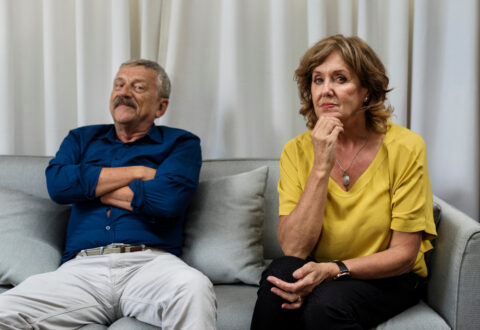In a world filled with noise, bright screens, and sprawling cities, our desire for simplicity and balance has never been stronger. Many people want to live a lifestyle that is closer to nature, but often the conveniences of modern life lead them in a different direction.
Instead, picture a home that moves to the rhythm of the earth. A shelter that breathes with the wind keeps you warm from the cold and leaves hardly a footprint when it is deconstructed.
This harmony between humanity and nature isn’t a modern concept; it has been embodied for centuries by the Mongolian Yurt, the traditional home of the nomadic people of Central Asia.
In this article we will explore what makes the Mongolian yurt a relevant representation of balance, sustainability, and humanity’s connection to the natural world.
1. An Architectural Dialogue With Nature

Mongolian yurt, also referred to as a “ger”, is much more than a mobile dwelling; it is a living demonstration of balance among design and nature. Each element of the yurt is made with immense regard for the land it inhabits.
The wood lattice walls, the felt insulation composed of sheep wool, and its circular form reflect a philosophy of coexistence, not in resistance. Unlike modern construction, which requires energy-intensive materials and fixed foundations, yurts utilize renewable and biodegradable materials.
This building complies with the climate rather than defying it. This circular design diverts high-speed winds in the Mongolian steppes, and the wool-insulated interior is warm during the cold winter but cools with ventilation in summer.
2. Portable Home For Nomadic Life
The most noticeable aspect of the yurt is mobility. Over the centuries, Mongolian nomads have been relocating their homes across the grasslands seeking new grazing fields. This is a way of life that relies on a shelter that can easily be disassembled, moved and rebuilt.
A yurt can be dismantled within an hour and can be transported by means of yaks or camels. Although it is simple in design, it is extraordinarily sturdy. This play of power and fluidity reflects the connection of the nomads with the surrounding nature.
3. Circular Design: Symbol Of Equality And Balance

Yurts are shaped in a circular manner, a decision made in terms of not only architecture but also as a deep aspect of culture. The traditional Mongolian ger has no corners and strict lines. This circularity promotes equality among the people who inhabit it.
The central area of the yurt, called “toono,” is an open skylight connecting the inside to the sky. It is a natural source of light, ventilation, and symbolism of the spirit. The circle symbolizes the unity of all forms of life and acts as a reminder to its inhabitants of their connectedness to the earth and the heavens.
4. Sustainability Rooted In Tradition
Sustainability is an idea that Mongolian nomads used long before it became a worldwide issue. All the materials of the yurt are renewable and biodegradable. The wooden frame is usually manufactured using trees that grow in abundance and can be harvested with minimal destruction of the ecosystem.
A good example of the closed-loop system is the felt covering, which is formed through the compression of sheep wool using pressure and water. The felt can also be turned back into the soil as compost when it wears off.
This reverence towards natural resources is due to generations of direct relationship with the land. It’s a reminder that true sustainability is not about new technology but about remembering ancient wisdom and applying it with care.
5. Thermal Efficiency: Living Comfortably With The Climate

The Mongolian plateau experiences extreme temperature swings—burning heat in summer and bitter cold in winter. Yet, the yurt provides comfort in both. Its double-layered felt and aerodynamic shape create natural insulation and airflow.
In winter, body heat and the warmth of a small stove is trapped in the thick felt to keep the interior warm even as the outside is sub-zero. During summer, the same building breathes and emits hot air via the roof aperture. This is a form of passive climate control that does not need electricity, air conditioning, or any modern heating systems.
6. Minimal Impact, Maximum Connection
When a yurt is dismantled, the land beneath it remains almost untouched. There’s no concrete foundation, no scars left behind. The grass continues to grow, the soil breathes freely, and life resumes as if the home was never there.
This temporary footprint reflects a philosophy of respect—take what you need, give back what you can, and leave the earth as you found it. It’s a principle that modern architecture often overlooks, yet it’s essential for sustainable living.
7. Cultural Space That Nurtures The Spirit

Beyond functionality, the yurt serves as a sacred space. Its interior arrangement follows a traditional layout that aligns with spiritual beliefs and social customs. The hearth sits at the center, representing life and warmth.
The right side of the yurt is reserved for men and tools, while the left side belongs to women and domestic items. This reflects harmony between masculine and feminine energies. The yurt becomes more than a shelter—it becomes a teacher of balance, gratitude, and coexistence.
Conclusion
The Mongolian yurt stands as a living testament to humanity’s ability to coexist with nature without compromising comfort or dignity. Its design, materials, and philosophy reveal a seamless integration of practicality, spirituality, and environmental respect.
In a world searching for balance, the yurt is not merely a relic of the past—it’s a blueprint for the future. It invites us to slow down, to listen to the land, and to build lives that reflect the same harmony it has embodied for centuries.
Disclaimer: This article is for learning and sharing information only. All details are based on general knowledge about Mongolian yurts and nomadic life. We do not claim any cultural or copyright ownership. We try to keep the information correct, but mistakes can happen. Please check facts on your own if needed. The writer and website are not responsible for any problems caused by using this information.





